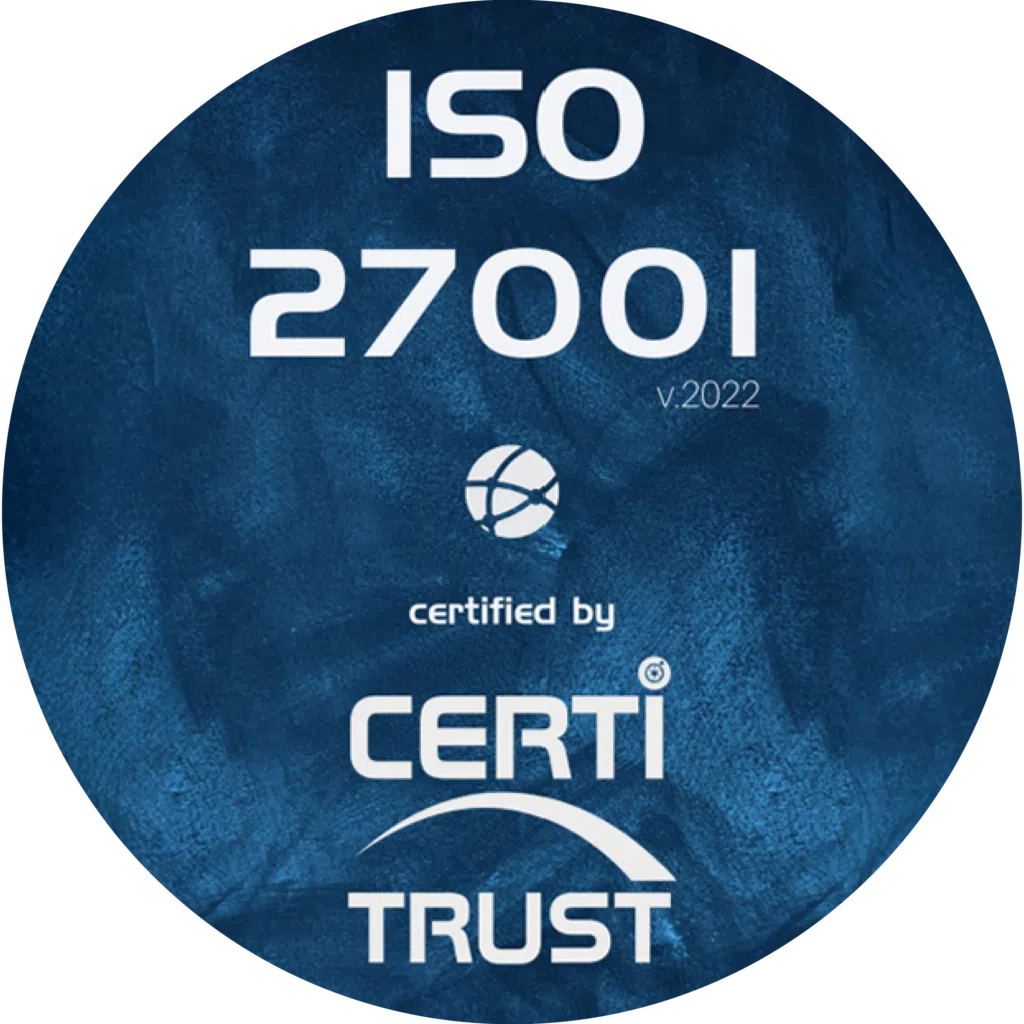Can a bakery produce bread without flour or salt? Or without adapted kitchen appliances, utensils and fittings?
Of course not! To run a successful business, you need a dedicated procurement team to obtain these essential goods and services, ensure prompt delivery and maintain good relations with your suppliers.
Renting office space, paying utilities (water, electricity, etc.), IT subscriptions and cleaning services are also part of the procurement team’s responsibility. However, these items fall into a different category, and today we’re going to learn which is which.
Together, we’ll look at the key differences between direct and indirect procurement, how their strategies differ, and how to control spending on these two procurement categories.
What is direct procurement?
Let’s take as an example a local family-run pizzeria you love, located near you.
What different products or services do the staff need to buy to make that great pizza? Do they need flour and salt for the dough?What about tomatoes to make a sauce and different toppings, like cheese and pepperoni?
All these elements are essential to running a pizzeria, and without them, the final product simply wouldn’t exist, and a pizzeria would soon close its doors.
So, these items would be classified as direct purchases.
A direct purchase (or production purchase), is thepurchase of goods and services directly associated with the manufacture of the company’s end product.
Take these examples:
- A factory buying raw, uncut steel to manufacture vehicle parts;
- A plumbing company buying new fittings to install;
- A restaurant buying raw food;
- A bakery buying flour to make bread;
- A fashion brand sourcing fabrics.
Typically, direct purchases are made in large quantities to obtain a wholesale price.
If we consider the pizzeria mentioned above, the owner (or a procurement team for a larger chain) would probably buy a month’s worth of flour, salt and pizza toppings.
Before finalizing the deal, they would probably have received offers from different suppliers, with the aim of obtaining a larger discount.
For direct procurement, making the most of sourcing materials, minimizing risk and fostering long-term relationships with trusted suppliers will bring the most revenue and value to your business.
What is indirect procurement?
This is where the other little things that support the business come in: electricity, transport and office supplies are all necessary to the running of a business.
Some employers even supply coffee, drinking water and cookies. These items are indirect purchases.
These products and servicesare not directly linked to the company’s production process, but facilitate it.
Other common examples include:
- Outsourced services: security guards, concierge services, IT and any other service that the company manages externally.
- Office supplies: laptops, coffee, toilet paper, pens and paper clips.
- Travel and transportation: business travel expenses.
- Technology: computers, software subscriptions, telephony.
- Professional services: consultants and advisors.
- Utilities: water, electricity and maintenance.
- Marketing: advertising and social networks.
- HR functions: recruitment and training.
- Facilities: offices and laboratories.
As you can see, there’s much more to day-to-day business operations than direct procurement.
In fact, indirect expenses amount to 50% of all company purchases, and if handled correctly,companies can reduce indirect costs by 25%.


Direct or indirect procurement: how their strategies differ
The main difference between direct and indirect procurement lies inthe way they are managed and the functions they fulfil.
Direct procurement focuses on securing basic supplies for processing and delivery to customers, while indirect procurement deals with the purchase of spontaneous goods.
And since direct and indirect procurement functions differ, they also operate differently.
Let’s take a closer look at how they operate in different categories.
Organizational configuration
Direct procurement is generally managed by supply chain teams, has a strict budget and focuses on specific spending areas.
Indirect procurement, on the other hand, is often decentralized and managed by multiple internal stakeholders with less rigidity, is often dispatched in budgets by department, and has a distinct validation process.
Nevertheless, having indirect expenses dispersed throughout the company is not ideal. Creating a centralized structure and expense categories for indirect purchases helpsto ensure compliance and reduce costs, particularly in service-oriented companies where indirect costs are high.
Supplier relationship management
Since direct procurement teams deal with suppliers whose materials have a direct impact on the quality of the final product, and consequently on the company’s reputation and credibility,supplier relationship management is their top priority.
This is why a great deal of time and effort is invested in building long-term, sustainable and collaborative relationships to ensure a stable supply chain, improve quality and enhance efficiency.
Indirect procurement teams, on the other hand, are more focused on expense management and reducing corporate spending, so the relationship with suppliers is more transactional.
But make no mistake, the supplier relationship on the indirect procurement side can have an importance depending on the company’s field.
For example, a software company with little or no need for direct procurement can, through strategic supplier management, reduce its overheads and negotiate the best prices for related services.
Inventory management
Let’s return to our local pizzeria.
Let’s assume it’s been open for 2 years now. The owner probably already knows how many pizzas he sells per month.
For example, if he knows he sells around 300 pizzas a month, he’ll calculate how much flour he needs and buy enough for the month.
Efficient inventory management and direct procurement are interconnected. If a companyruns out of raw materials, this can significantly damage the supply chain and have devastating consequences on the company’s bottom line.
Meanwhile, indirect procurement operates on a shifting need, as monthly coffee costs for staff, office equipment and services cannotbe accurately predictedin advance. Consequently, there is little opportunity to plan or budget for indirect expenses.
Performance measurement
Since procurement activities for direct and indirect procurement are not the same, measuring their success is also different.
Indirect procurement teams focus primarily on spend management, ensuring that there are no redundant expenses and that thecompany isn’t wasting money on costs that don’t actively support business growth.
That’s why they usually measure their success using indicators such as blocking wild buys and reducing costs.
On the other hand, the main task of direct procurement teams is to fulfill customer orders on time and in full. The gains are as important as inventory management and delivery indicators.
For example, unused stock leads to ongoing unnecessary costs by taking up storage space and tying up cash flow.Meanwhile, late deliveries and poor supplier performance lead to an inability to satisfy the customer’s order and, as a result, can seriously damage your company’s bottom line.
So making sure the company has the right materials at the right time is a priority.
Impact on industries
We must not underestimate the indirect or direct impact of procurement on overall business success.
Naturally, as processes and needs differ by industry, so does the amount spent on direct versus indirect costs.
For example, direct spending far exceeds indirect spending in industries where the materials companies purchase have a direct impact on their end product, such as manufacturing, construction or retail.
On the other hand,IT companies, recruitment agencies and service companiesfavor indirect spending.
Tips for better control of direct and indirect procurement
It is now clear that indirect and direct procurement involve different processes, stakeholders, functions, objectives and strategies, depending on the supplier.
It’s bestto develop separate approaches and strategies for these two types of expenditure.
We’ve put together some good advice for increasing the value of your company’s purchasing processes for both direct and indirect spend.
- Use your data to understand trends, identify opportunities and develop purchasing strategies by category.
- Regularly review your contracts for savings opportunities or restrictions that increase costs or limit services, such as termination fees, automatic price increases or contract renewals.
- Work closely with the finance department. Cooperation between the two will improve financial reporting, demand planning and decision-making; it will also help increase savings and strengthen supplier relationships.
- Track and measure metrics to improve decision-making and align the procurement process with corporate objectives, goals and strategies.
- Invest in technology (software) to best address sustainable procurement.
Is purchasing management software really worth it?
Automated purchasing gives your direct and indirect purchasing teams the visibility they need to maintain good supplier relationships, manage inventory andidentify opportunities to improve sourcing and reduce costs
Here’s how you can improve your purchasing management with eProcurement software.
- Put an end to manual, repetitive tasks. Replace tedious work with customizable process automation.
- Forget about Excel or PDF orders. Generate purchase orders automatically, and send them instantly to suppliers.
- Order your products and services with unlimited product catalogs for easy management.
- Save 90% of request approval time with approval thresholds, intelligent reminders, and the ability to reject or approve from anywhere via e-mail.
- Gain valuable insight into your performance with customized dashboards and reports to identify cost-cutting opportunities, better forecast spend and address inventory needs.
- Easily manage suppliers and budgets in one place.
- Automatically reconcile purchase orders with incoming supplier invoices.
- Integrate your Weproc data with any accounting or ERP system, and synchronize all supplier data and documents.
FAQ
Are indirect purchases as important as direct purchases?
It all depends. Some industries, such as manufacturing, construction and retail, place a higher value on direct purchases.
Nevertheless, technology companies, recruitment agencies and companies providing professional services may give priority to indirect purchases.
Why are indirect purchases important?
Although it may not seem like it, indirect purchases represent a substantial part of any company’s budget, and therefore have a significant impact on a company’s long-term success.
This is particularly critical for fast-growing companies, which have more supplier contracts, data and purchases – these costs can quickly spiral out of control as the business expands.
With the right strategy and accurate tracking of products and services under indirect procurement, you can:
- Eliminate uncontrolled purchasing,
- Reduce costs and increase profits,
- Strengthen commercial operations,
- Develop mutually beneficial relationships with your suppliers.
What are the challenges of indirect procurement?
Whatever your business sector, some of the common challenges you may encounter when managing indirect procurement, particularly if you don’t have purchasing management software to help you, include:
- Working with a large panel of suppliers,
- Poor process visibility,
- Uncontrolled purchasing,
- Lack of control,
- Overspending.
Conclusion
The main difference between direct and indirect procurement lies in the functions they perform and the objectives they seek to achieve.
Direct procurement refersto the sourcing of raw materials that have a direct impact on the company’s revenue and production process, for example, a pizzeria buying flour to produce a pizza. It focuses on maintaining relationships with key suppliers, inventory and supply chain management. Basically, you want your suppliers to provide you with the best quality products on time, so that your customers get the best possible service.
On the other hand, indirect procurement meansbuying materials that facilitate the production process but are not directly related to it,for example, paying for services, offices or transport. When it comes to indirect costs, many companies try – and need – to reduce their costs as muchas possible.
Direct purchases are more end-customer oriented, while indirect purchases are more business-oriented. In both cases,evaluating and optimizing purchasing processes helpsto optimize spending andachieve a better bottom line.
Want to learn more about our Weproc procurement management software?
Contact us or request your 15-minute demo below!









